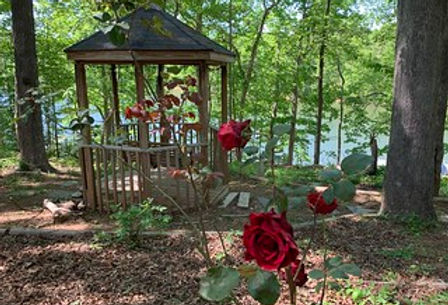

BELIZE
We flew into Belize City to wrap up our Caribbean adventure and arrived at Harbor View Hotel on a rainy afternoon. The taxi ride through the city felt like a blur of wet streets and vibrant colors. Our apartment, nestled in the lush gardens by the pool, felt like a hidden oasis—calm, green, and utterly peaceful.


After checking in, we wandered through the rain-soaked streets of Belize City, our stomach was already reminding us it was well past lunchtime. The plan was to head to the Secret Garden Restaurant and Bar for a late lunch, but as often happens when you're exploring a new place, distractions are part of the adventure. First, we stumbled upon the iconic Belize sign. Vibrant, colorful, and perched against the backdrop of the Caribbean Sea, each letter seemed to tell its own story, it's bold colors.

Just steps away from our hotel lies the bustling Belize Harbor, where the city meets the Caribbean Sea in a vibrant dance of activity. We could smell the air is filled with the salty tang of seawater and hear the lively chatter of fishermen unloading their daily catch. Water taxis zip in and out, ferrying passengers to the picturesque cayes of Caye Caulker and Ambergris Caye. This is also the area where towering cruise ships bring the arrival of eager tourists ready to explore Belize's treasures. We chose to go inland to see Mayan ruins on the day the cruise ship arrived which enabled us to miss the influx of people.


With the sun coming out and a salty breeze in the air, we continued walking and soon found we were standing in front of the Baron Bliss Lighthouse. Its red and white tower stood proudly against the blue sky, a silent tribute to one of Belize's most curious benefactors. Baron Bliss, the wealthy British recluse who never actually set foot on Belizean soil, left a generous fortune to the country upon his death. There's something poetic about a lighthouse commemorating a man who loved a place he never fully explored.

Also nearby was the Swing Bridge. Walking across the Swing Bridge which connects the tourist side to the old town of Belize City. Built in 1923, this manually operated bridge stands as one of the last of its kind in the world. Strolling across, you can almost hear the echoes of the past—the creak of gears turning, the shouts of boatmen below, and the steady footsteps of pedestrians. The bridge connects the north and south sides of the city, serving not just as a crossing but as a reminder of the city's resilience and history. Unfortunately, we were not able to witness the bridge being swung open to let a boat pass.
MAYAN RUINS OF ATUN RA
Visiting Atun Ra was an experience unlike any other. As I approached the site, I was immediately struck by its ancient energy and quiet reverence. The site, named after the powerful sun god, holds deep historical significance and is believed to have been a ceremonial center for the ancient Maya civilization. Walking through the towering stone structures, I could almost feel the presence of those who once gathered here for rituals and ceremonies. The guide shared fascinating stories about the site's history, including its connection to astronomy and the alignment of its structures with celestial events.


Behind one of the pyramids at Atun Ra, we discovered an intricately carved stone depicting the face of the Maya rain god, Chaac. The carving, weathered by time yet still strikingly detailed, seemed to stare back with an intense, eternal gaze. Our guide explained that Chaac was revered by the Maya as the bringer of rain, essential for agriculture and survival. The placement of his image behind the pyramid was intentional, symbolizing protection and the life-giving power of water.
Standing atop one of the main platforms, I gazed out at the surrounding jungle canopy and imagined what life might have been like centuries ago. The blend of history, nature, and spirituality created a moment of profound connection—a feeling that time itself had paused. Atun Ra is not just a historical site; it's a living testament to the ingenuity and spirituality of the Maya people.



The Maya used Atun Ra as a multifunctional site, serving as both a ceremonial and administrative hub. Priests and astronomers would gather to observe the stars and track celestial cycles, ensuring their agricultural calendar remained accurate. The pyramids were not only places of worship but also platforms for public gatherings and important announcements. Markets likely bustled with traders exchanging goods, and ritual ceremonies were performed to honor deities, seek rain, and ensure bountiful harvests. Atun Ra was a center of life, knowledge, and spiritual connection for the Maya people, reflecting their deep reverence for both the natural and celestial worlds.